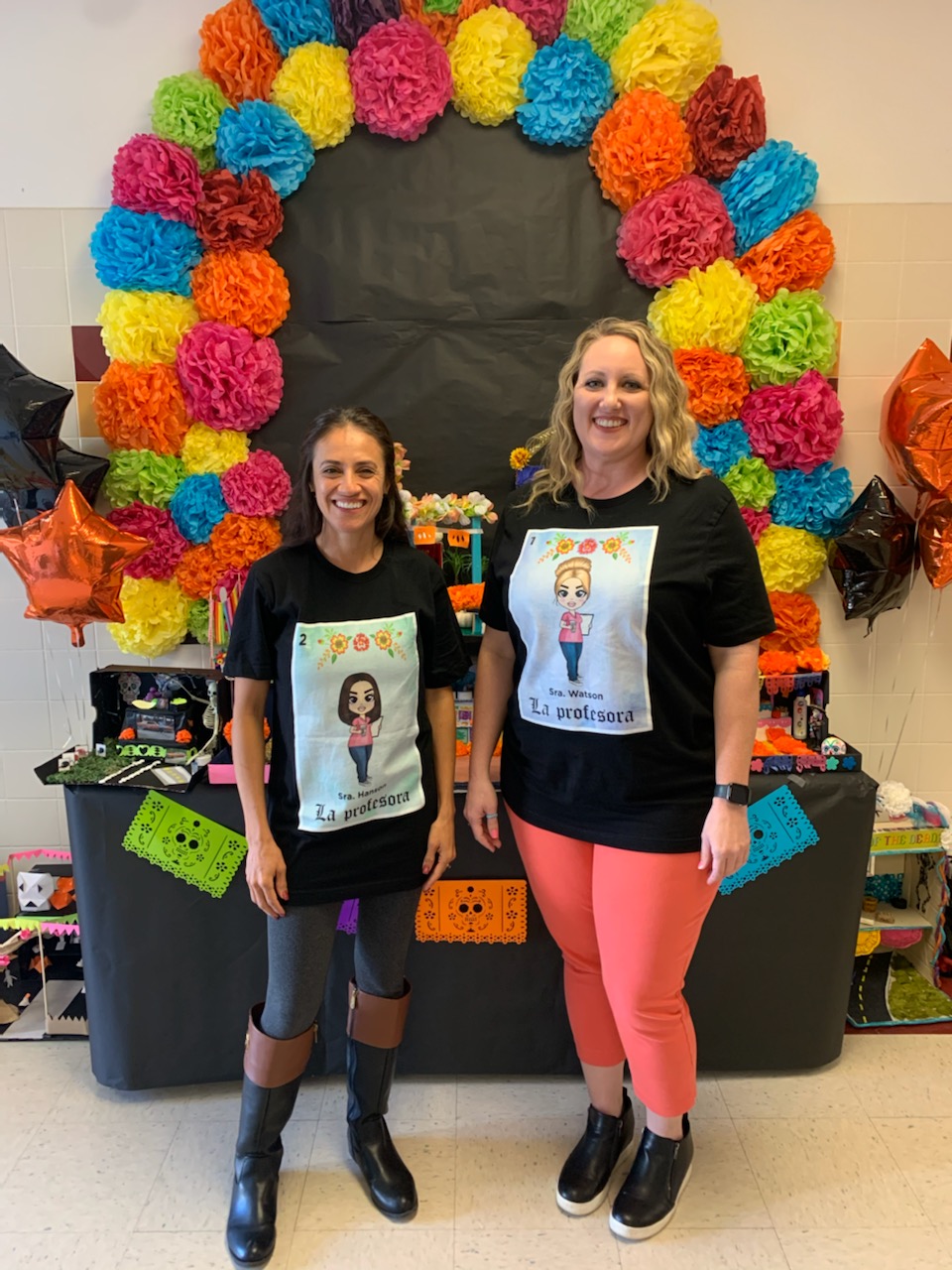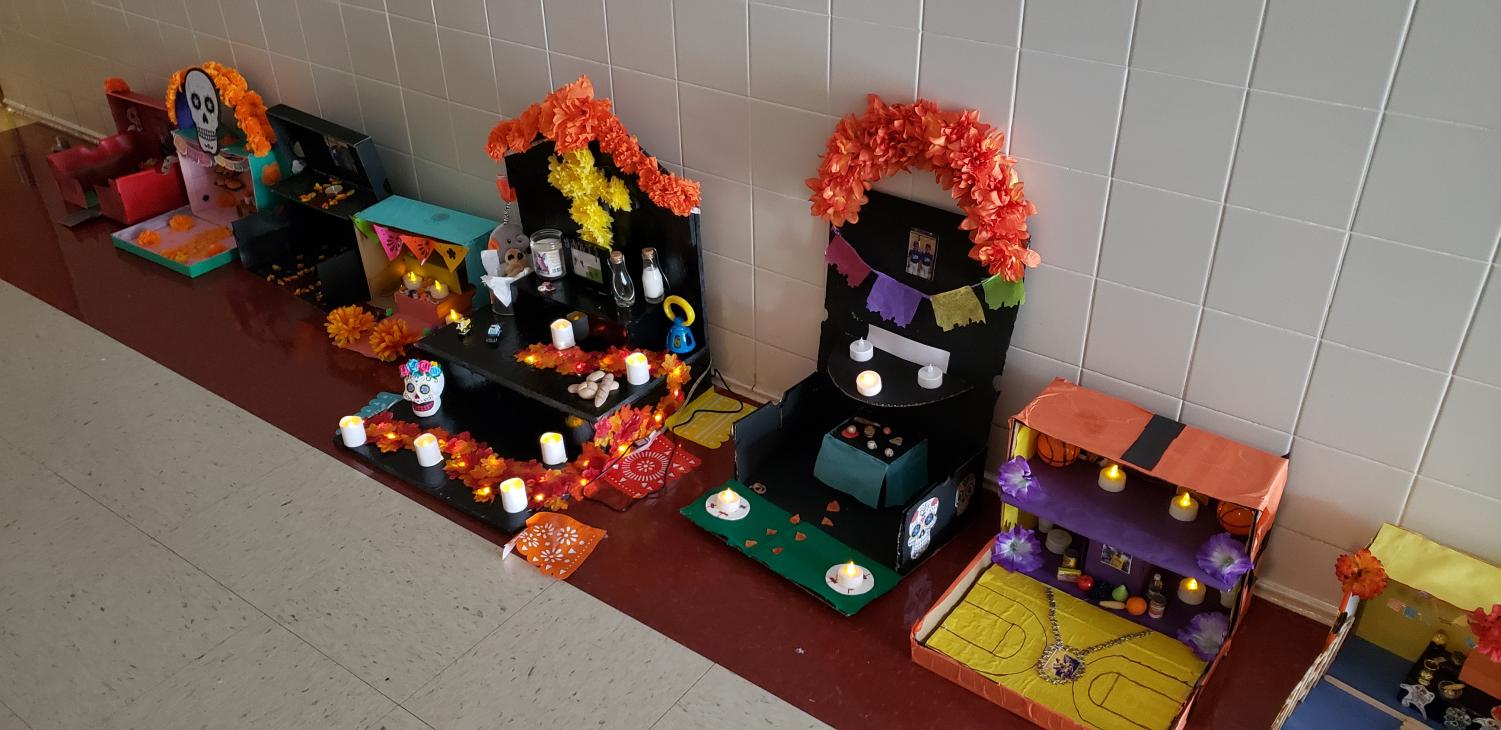Spanish teachers honor Dia de los Muertos tradition
In their Spanish classes, Students created banners, alters, and wreaths for Dia de los Muertos. Photo by Audrie Smith.
November 8, 2021
Spanish I students built their Dia de los Muertos Ofrendas (altars) on October 31. The Dia de los Muertos (Day of the Dead) is a tradition celebrated by Mexican and Latin American cultures from November 1-2 to celebrate their loved ones that have passed on.
¨The meaning behind this tradition is to remember and honor the lives of our family members that have passed on,” Spanish II teacher Gabriela Hanson said. ¨Mexican culture was my inspiration. I want to be able to share my culture with others.”
To honor this tradition, Hanson assigned her Spanish II students a project of making a wreath as if it were an altar.

¨I think El Dia de los Muertos is important because my students can learn about different Spanish cultures,¨ Hanson said. ¨I want to teach them so they have an understanding of the different American and Central American cultures. I also want my students to reflect on the lives of people in their own culture that have been lost. We make the conscious effort to remember our loved ones who were very important parts of our lives and have passed on.
The altars consist of photos of passed loved ones, objects that they owned, and their favorite foods and drinks. In a traditional altar, decorations include sugar skulls, marigold flowers, and pan de muerto (bread of the dead). Candles light the way for spirits and incense to purify the way.

¨This tradition is a happy one and is designed to remember the dead loved ones of a person. It is a way to commemorate and pay tribute to their loved ones,¨ Spanish I teacher Rebbeca Watson said. ¨Family members decorate graves and build altars to show respect to their family members that passed away before them.¨
Watson’s Spanish I students each built a mini altar for a loved one from a shoe box.
¨I wanted to assign this project to my students because I feel that it helps the students get involved with the tradition,¨ Watson said. ¨It also helps them to better understand the tradition and the hard work that goes into making altars. I feel this project is important because students learn more when they have a personal connection to the lesson.”

